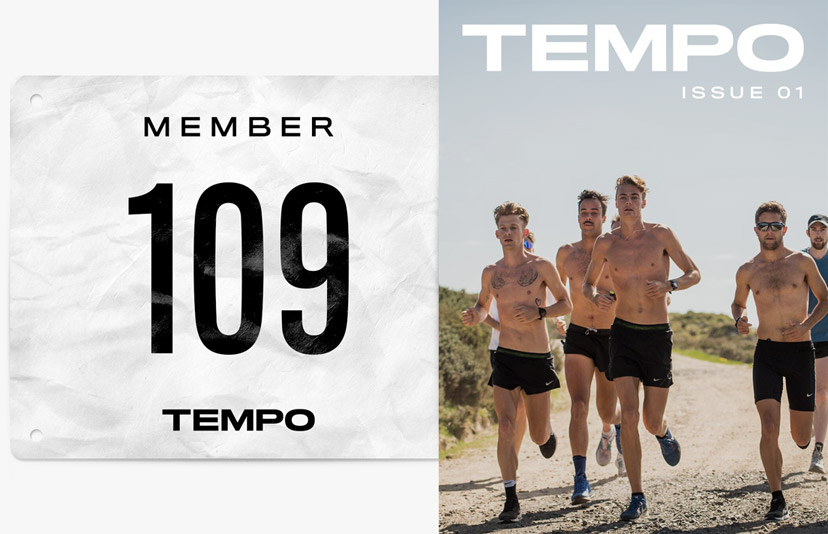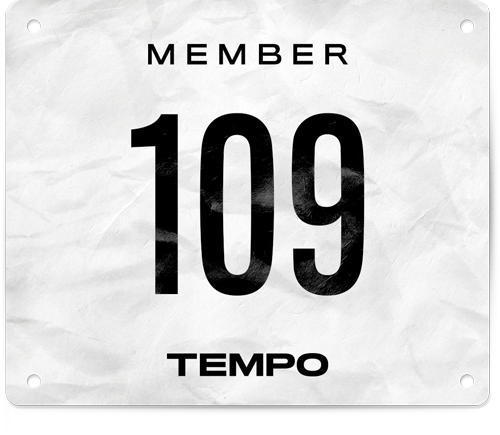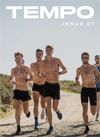Culture
Inside Running: A conversation with David Bracetty
Meet the man capturing the moments that matter
Somewhere in the world right now there is an athlete on the cusp of 'making it'. Since college they have toiled through injury and disappointment, the occasional break in the clouds coming in the form of a strong placing or a PB. In smalltown, USA, they train without distraction or notoriety.
Beside them is David Bracetty.
Over the past 18 months the Pennsylvania photographer and filmmaker has taken audiences behind closed doors with a number of world class athletes, providing a window into a world very few people ever get to see.
Bracetty's ‘Off The Track’ series at the 2016 US Olympic Track and Field Trials showed a passion for humanising elite athletes that are often put on pedestals.
As well as spending time with athletes on massage tables and in ice baths, Bracetty took post-race portraits of 3rd and 4th place finishers, contrasting the feelings of relief and disappointment.
Equally important was his work capturing the late David Torrence winning a last-chance qualifier for the Rio Olympics in May 2016. If it weren't for an understanding of track athletes and a nose for the big moments, that memorable night at Swarthmore might never have been captured.
For Bracetty, the appeal of shooting athletes is the grind and the struggle, not the glory.
“As a runner, being lost in all those moments of training alone in the winter was definitely my favourite part. You get to decide your own fate when everyone else is being a wimp about it.
Nobody ever sees behind the scenes. All they see is the result, which is actually only about 1% of the process. But especially as a college coach, I saw all the crap those kids go through and then have to perform"
"Having seen all that myself, I'm drawn to that with the elites as well. I want to lift the curtain on what happens behind the scenes and show people that it’s not this glamorous sport. Even racing isn't glamorous, it's horrible!"
Capturing the kinds of images Bracetty takes is no easy task. Track athletes spend their lives searching for tenths of a second, a highly stressful pursuit that doesn't lend itself to being relaxed around newcomers with big cameras.
For a storyteller like Bracetty, it's the only option.
"If I can get access to the athlete and be intimate, that’s where I win. I never do well with the rules and accreditation and governing bodies and all that. I wasn’t going to be the guy with the big gear at the finish line getting the same old shot. There was no way for me to stand out doing that”.
Bracetty’s start in photography came while he was running in college. When an injury interrupted his running career, photography came along to fill the void.
“My parents saved up and bought me a Kodak EasyShare for maybe $200, which for our family was a lot of money. That was my freshman year of college. I was running track and XC and I got injured. I started taking pictures at the races, and because we grew up kinda poor and I always had to find ways to make money, I started selling my pictures to my school.
It snowballed from there. My dad raised me to be entrepreneurial, so in sophomore year I started shooting the Conference Championships.
I eventually spent $1,600 on a printer and bought a couple of macbooks so I could sell the images to parents at the events and capitalise on the impulse buyers!”.
Selling photos trackside is a long way from where Bracetty is now. In August, perhaps his most important work was released, the documentary ‘GABE', covering the ups and downs of Gabriele Grunewald, US 1500m runner and cancer survivor.
Grunewald is currently battling adenoid cystic carcinoma (ACC), which is attacking her liver.
“Gabe was great, she was super cool immediately. I had never met her before that. One of the assistants on the project, Nicole Bush (herself a former US National Champion steepler), knew Gabe already, which helped create some comfort around the camera. It’s a sensitive topic and I didn’t want Gabe to think these big company guys were coming in”.
Grunewald, a fan favourite in US athletics, is undergoing treatment for a rare form of liver cancer. Grunewald previously underwent successful surgery in 2009 and 2016.
“Getting that job, I felt lucky to get such a great opportunity to tell an amazing story”
"I did a test project for Leah O’Connor (the steepler) and her agent is Paul Doyle. Gabe is also one of his athletes.
Anyway so he went to Brooks and pitched them to tell Gabe’s story, and thankfully Brooks and Paul came up with the money for the project.
My main motivation for doing it was that it’s a supremely fascinating story that I wanted to have done justice to. I wanted it to be cinematic, and I couldn’t let someone else do it and not do the story justice.
If Bracetty got lucky landing the GABE project, he was in the right place at the right time in May 2016.
Acting on a tip from a friend who spotted David Torrence at her local coffee shop, Bracetty put two and two together and realised Torrence must have been planning to run the 1500m at the Swarthmore Final Qualifier that evening, around an hour from Bracetty’s home.
Conditions were perfect for fast times, and after a massive run from Nick Willis to set up a qualifier, Torrence ended up running 3:36:06 and securing the A standard for the Rio Olympics, with 11 men going under 3:40 (Ed: check out the race here - worth a watch).
That race, and Bracetty's coverage of it, provides an enduring memory of Torrence, who passed away in late August 2017.
“I didn’t have a storied history with him like some other people did, but my one interaction was supremely positive, which seems like a fragment in time of what he was like most of his life"
"That little bit that I was exposed to was who he really was.
He was on the phone with his coach afterward and he was saying something like ‘oh I guess I still am a decent 1500m runner’. I guess he had been doubting his fitness".
Bracetty recently shot the New York Marathon for Tempo, with a mission to explore the range of emotions runners faced during the race. His gallery from mile 20 can be seen here.
“The NY stuff I shot was inspired by that imperfection that you get with video. There’s a big trend in video of quick cuts and blurs, and this idea that you only ever get these glimpses of a moment, you don’t get the perfect shot. So that’s why a lot of the photos reflect that.
That’s why a lot of those people’s heads are chopped in the images.
Not because I don’t want to show their identity, but because sometimes you only get a little bit of the information and you have to make the rest of the story up in your head”.
As someone that has been shooting track athletes for the best part of a decade, it's not surprising that Bracetty looks outside the track world for inspiration.
I’m a huge fan of Nils Ericson, because I’ve always been obsessed with technical execution, whereas he’s more toward the art side of photography. Also Cait Opperman who shot the Breaking2 stuff. I also like Carlos Serrao because he does cool stuff and gets big clients".
As for the athlete he would most like to shoot?
“I would love to shoot David Rudisha. We’re both 800m runners, so I would like to see what he’s cooking up over there”.
Who knows what might have been had that college injury never occurred...
Check out more of David’s work on his website, and his Instagram profile.


